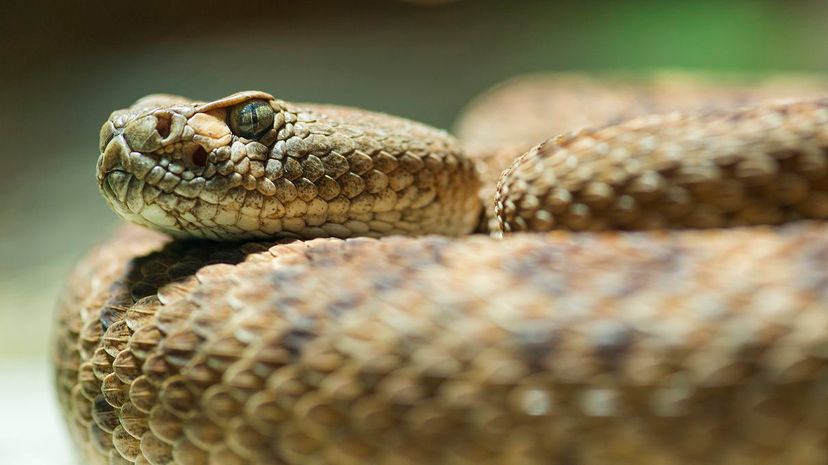
About This Quiz
Snakes aren't the most loved creatures in the world, and venomous snakes are loved even less. Of over 3,000 snake species, around 600 use venom for hunting prey or defending themselves. According to the CDC, about 20 of those are found in the United States and are responsible for venomous snakebites in 7,000–8,000 people each year. Needless to say, venomous snakes are dangerous creatures that should be avoided as much as possible.
If you live in the city and work in an office, you're in luck — an encounter with a venomous snake is improbable. However, the same isn't true if you work outdoors or live close to nature. And if you like going on adventures in the wild, your likelihood of seeing a venomous snake increases.
But whether or not you're likely to encounter a venomous snake, it can be helpful to know a thing or two about them. While these reptiles may seem homogeneous, they actually have different physical characteristics, temperament and behavior. Expanding your knowledge about these dangerous yet fascinating creatures can help prevent you from becoming another venomous snakebite statistic.
So, do you think you could identify a venomous snake in the wild? Do you know how to deal with a venomous snakebite? Ace this quiz and be a self-proclaimed venomous snake expert!
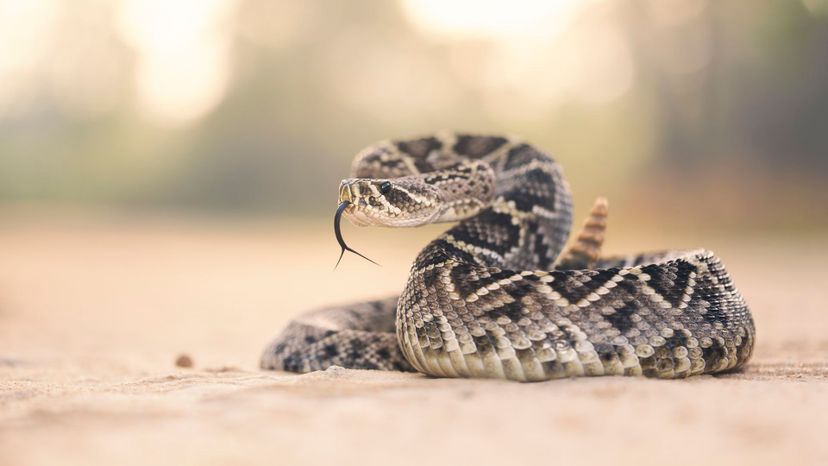
Named after the rattle at the end of their tail, rattlesnakes are between 1 and 8 feet long. To this day, 32 different species of rattlesnakes have been identified and cataloged.
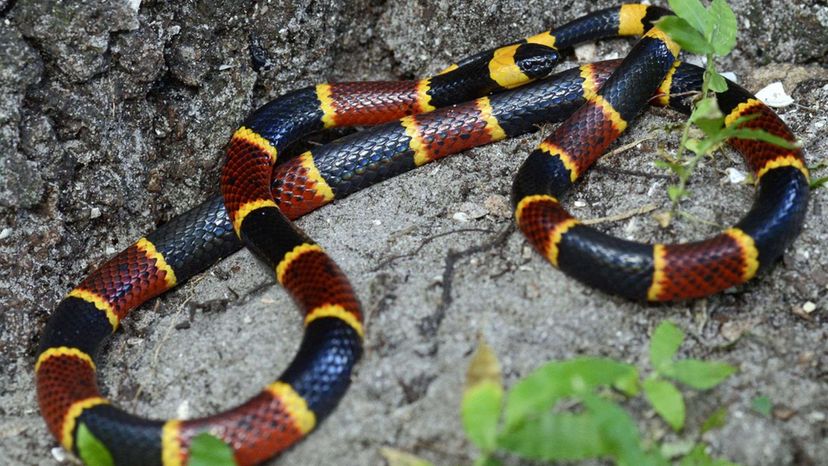
Coral snakes are easily identified by their rich vibrant colors and simple patterns. Many of them often have bright red and black sections and yellow stripes making them easy to spot.

About 200 species of venomous snakes are lethal. But if you live in a place with high-quality medical care, your chances of dying from a venomous snakebite are nearly zero.
Advertisement

Most antivenoms are created by injecting a particular snake's venom into a domestic animal and then harvesting and processing the antibodies from that animal. This discovery is one that has saved countless lives!
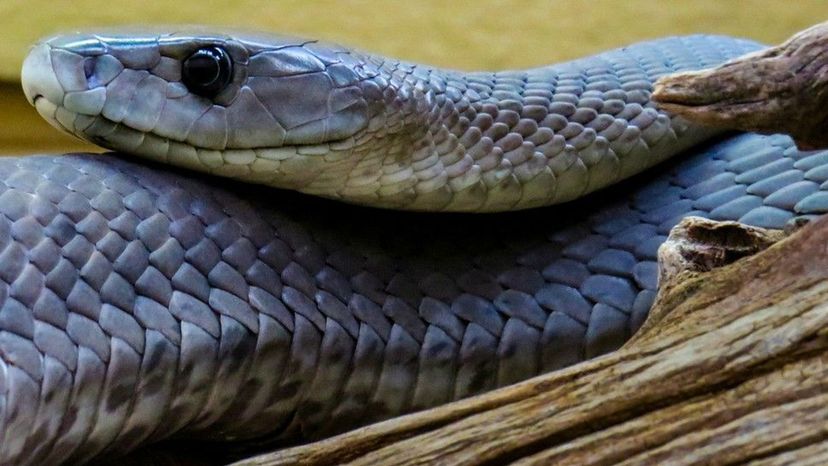
Unless you're on par with Olympic runners, you won't be able to outrace a determined black mamba. This snake can go as fast as 12.5 miles per hour, making it a deadly encounter to be sure.
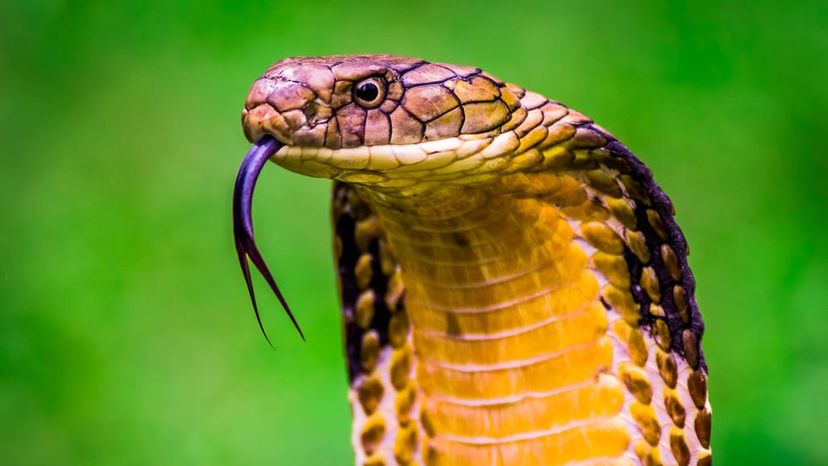
When threatened, cobras will flatten their necks in an effort to look larger and intimidate their foes. Due to this, it's no wonder that their name comes from the Portuguese word for hooded snake.
Advertisement
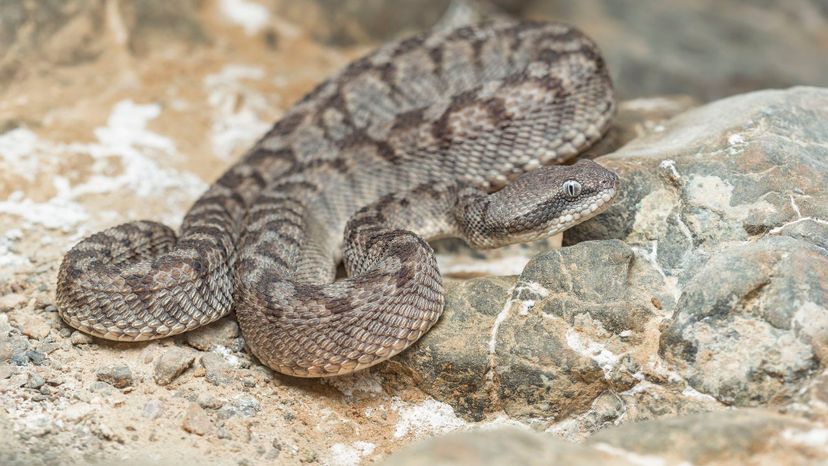
Found in some regions of Africa, India and the Middle East, saw-scaled vipers loop into S-shaped folds and rub their scales together to produce a hissing sound when threatened.
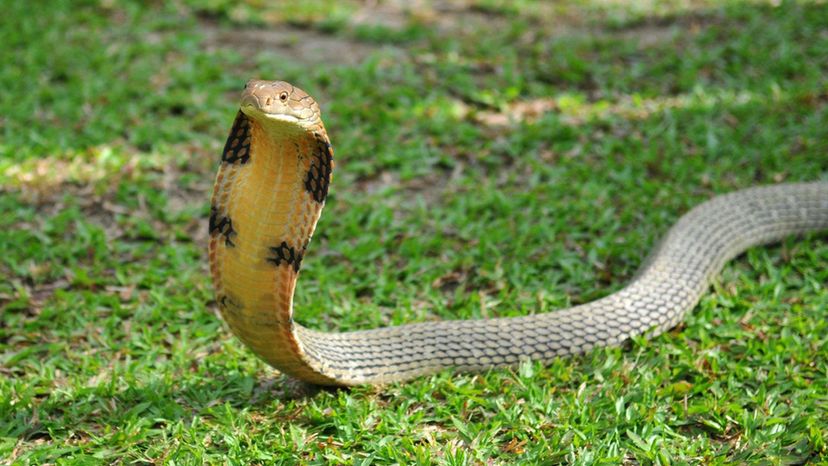
The longest king cobra on record (as of 2019) clocked in at 19.2 feet in length. When stood on its end, that's the height of an average adult giraffe! Adult king cobras are more commonly found to be between 10.4 and 13.1 feet in length.

Tiger snakes are protected species in some parts of Australia, and if you injure or kill one, you'll be faced with a hefty fine of $7,500 and possibly an 18-month jail sentence.
Advertisement
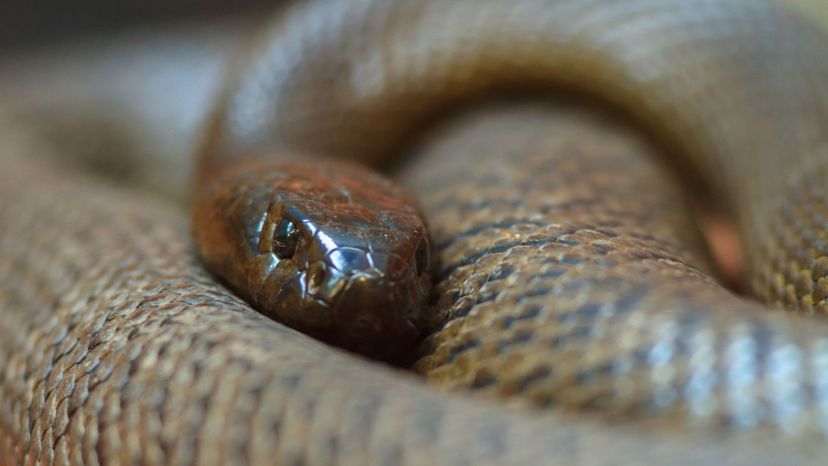
"Fierce snake" is an appropriate nickname for the inland taipan. Its venom is so toxic that one untreated bite can send you to the afterlife in as little as 30 to 45 minutes. If you value your life, steer clear of this creature.
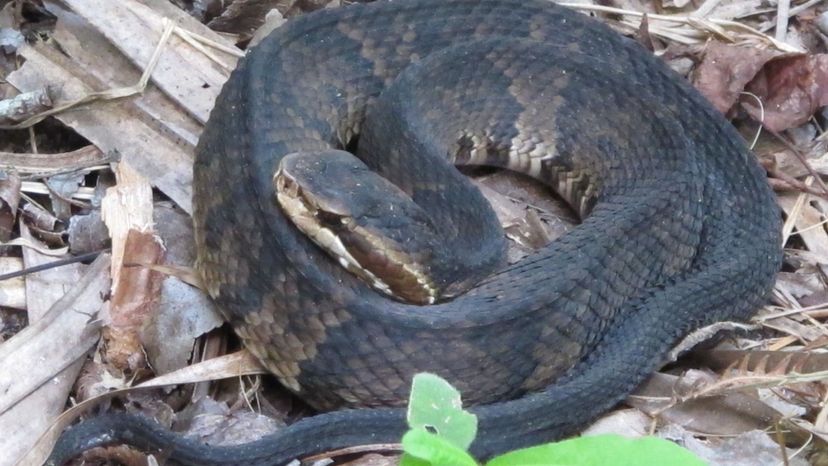
Cottonmouth snakes are also called water moccasins. Although their aggression is often exaggerated, their bites can leave scars and many victims of their bite sometimes require amputation of the limb.
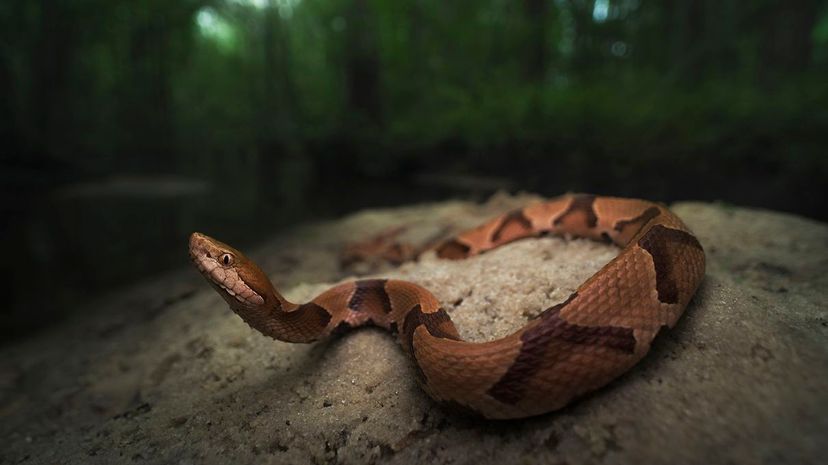
Known for the hourglass shapes on their body, copperhead snakes are petrified when they feel threatened. They don't normally attack humans, but they will bite if stepped on.
Advertisement

Since snakes need very little oxygen to keep their brain working, they can survive for another few minutes or hours after being beheaded. They're kind of like zombies of the animal world.
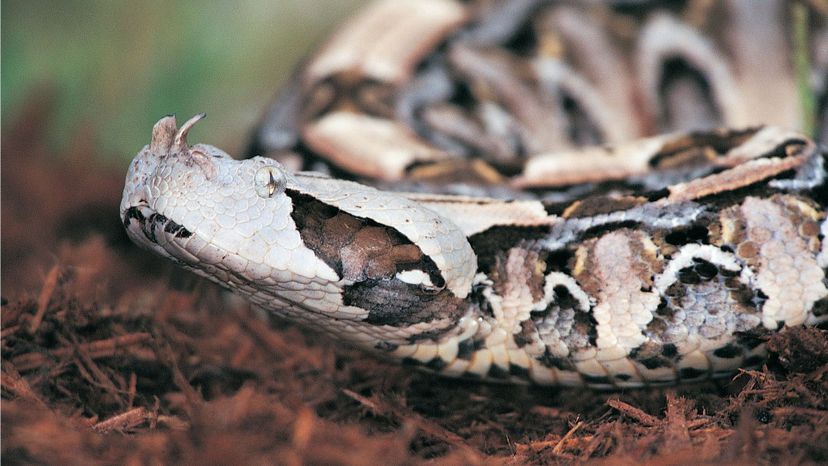
The distinguished Gaboon viper is known to have fangs that can measure up to 2 inches in length and has one of the highest venom yields of any snake species! If you're walking in Africa, keep on the lookout for this snake!
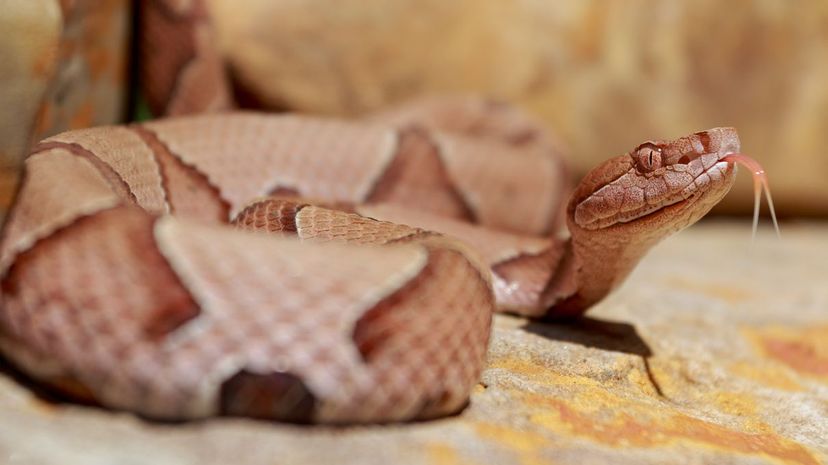
Copperheads account for the majority of snakebites in the United States. Unlike many snakes who give a warning before striking, copperheads are very quick to strike when threatened.
Advertisement
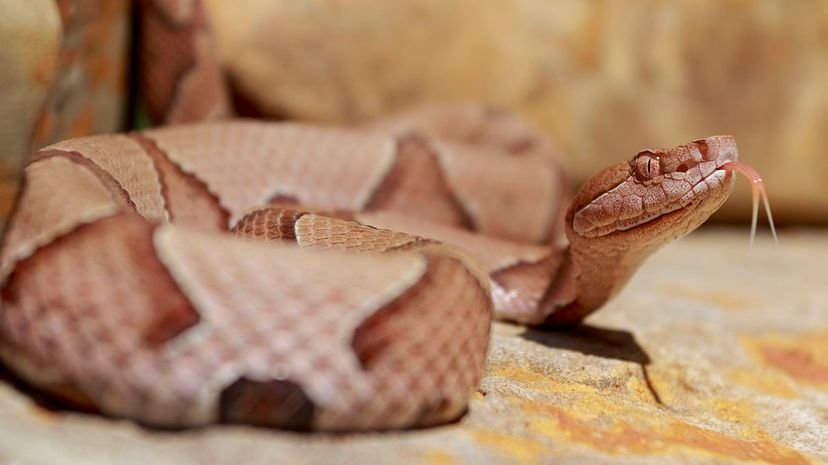
Snakes can't fly. What's referred to as flying snakes (chrysopelea) climb up trees and then glide instead of flying like a bird would. Chrysopeleas are only mildly venomous.

Hemotoxins are particularly dangerous when you consider the fact that they will either destroy your red blood cells or cause blood clotting if bitten. When push comes to shove, it's best to avoid the bite!
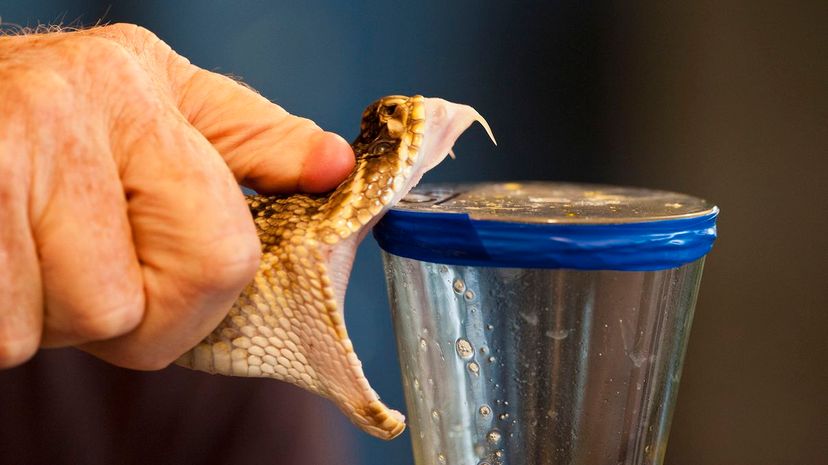
Sea snakes mainly produce a neurotoxic venom that will attack their prey's nervous system. They live in water for most if not all of their lives and most of them can't move on land.
Advertisement
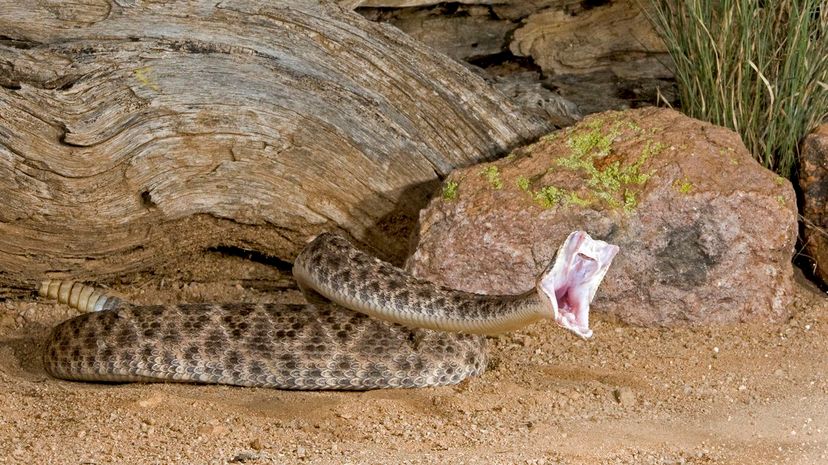
Something is poisonous when it can harm you either by touching or digesting it. On the other hand, something is venomous if it injects your tissues or blood with harmful toxins.

The second group of sea snakes is known as the sea kraits. These fascinating creatures can survive on land or out in the sea. While they can survive in either location, they are required to head toward land whenever they want to digest a meal or lay some eggs!

While coral snakes are related to sea snakes, cobras and mambas, they aren't related to vipers. Unlike many venomous snakes, they have round pupils instead of cat-looking ones.
Advertisement
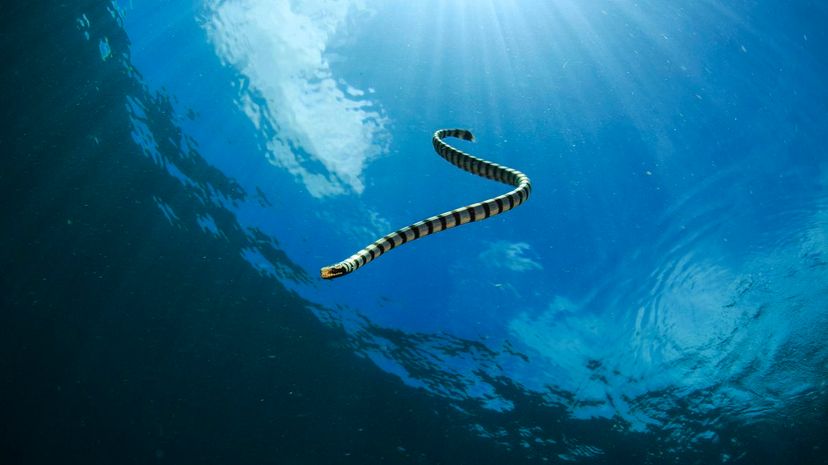
The process is quite easy; the main distinguishing factor between an eel and a sea snake is that eels have gills while sea snakes do not. This means that sea snakes do have to surface from time to time to breathe.
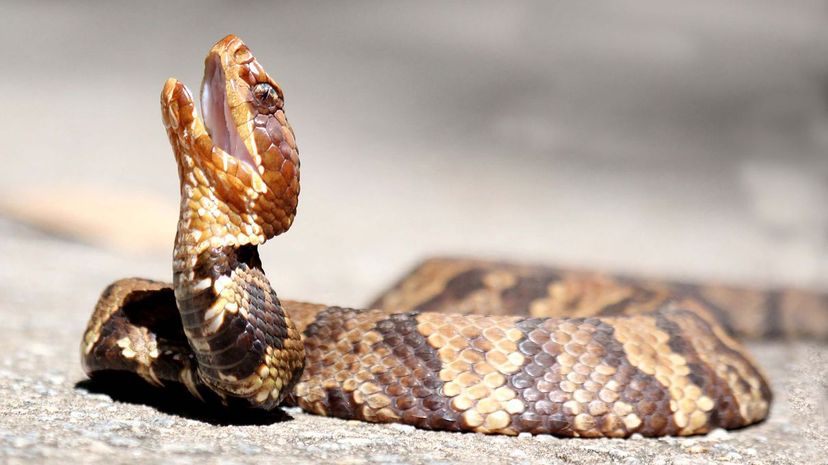
Venomous snakes can actually give you a dry bite, meaning there's no venom in the bite. If symptoms don't show eight to 12 hours after a bite, it's most likely a venom-free bite.
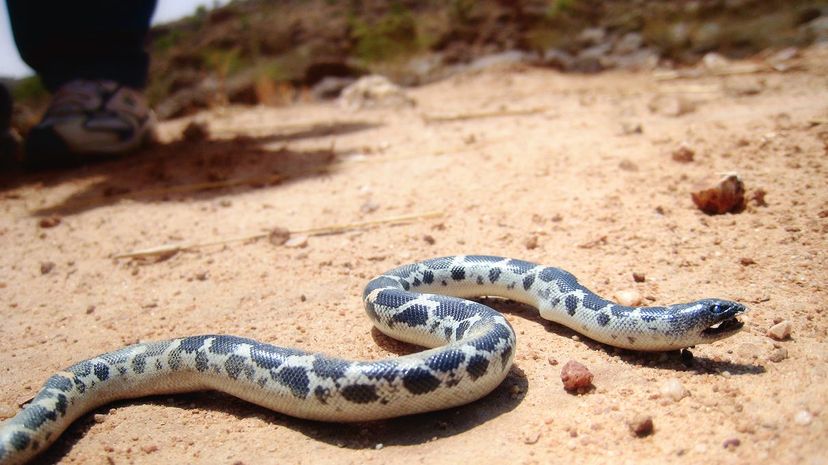
On average, snakes aren't normally aggressive creatures unless provoked. Like most humans, a snake does not really appreciate it when someone decides to step on their tail. So long as the average explorer watches their step, accidents can be avoided!
Advertisement
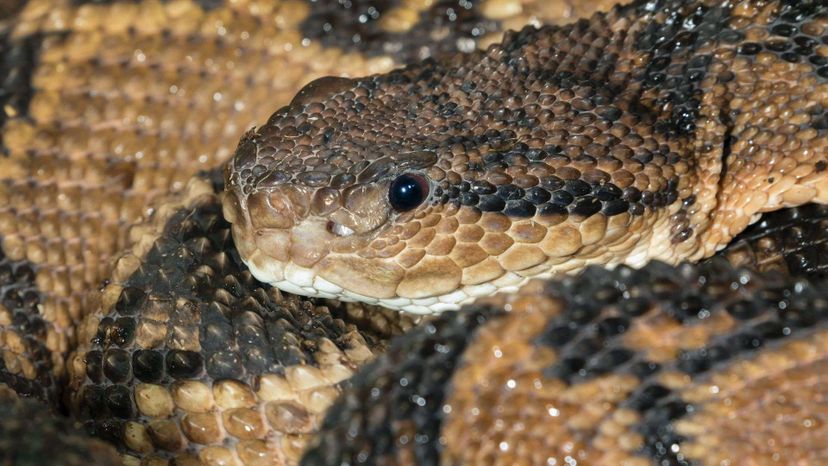
Bushmasters are 6 to 9 feet in length, but some grow to up to 13 feet. Their tail's horny spine that vibrates when threatened earned them the nickname "mute rattlesnake."
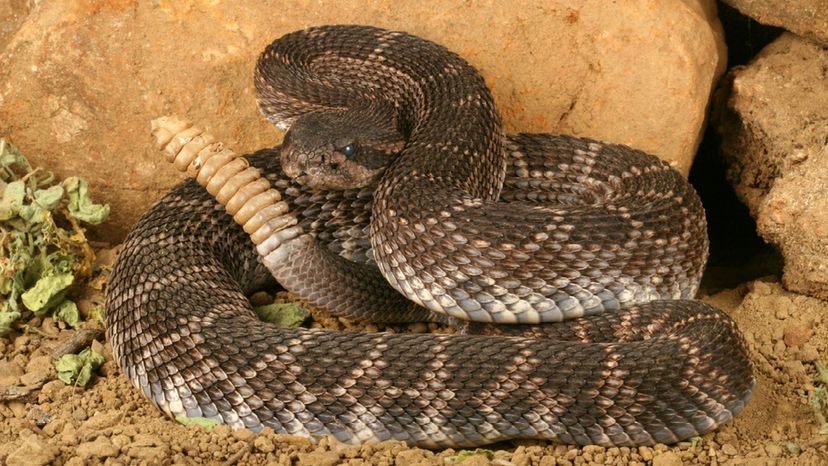
Rattlesnake rattles, as well as many snake scales in general, are made of keratin. Sound familiar? That's because keratin can also be found in the materials that make up human hair and nails!
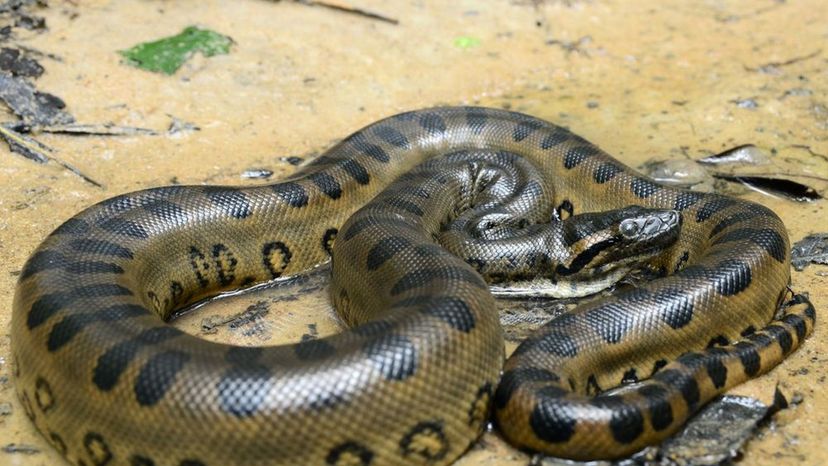
While anacondas are exceptionally frightening, they aren't actually venomous. Rather than bite, the anaconda will wrap its massive body around its victims and proceed to crush them to death!
Advertisement
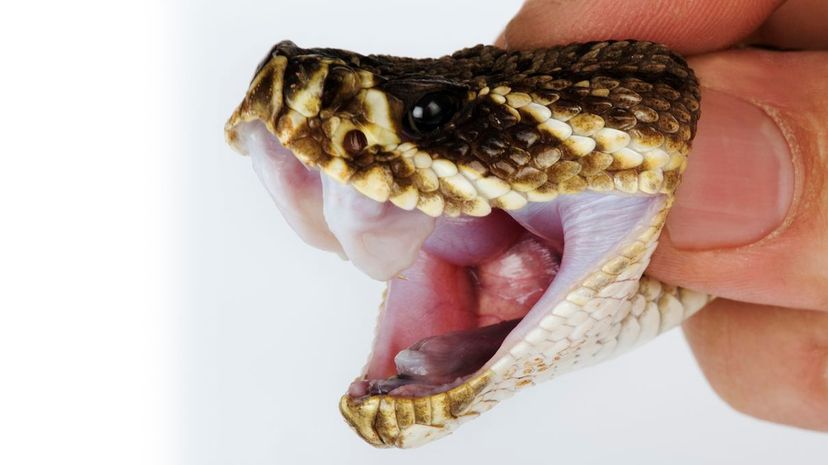
Neurotoxic venom is exceptionally dangerous because it attacks its victims' nervous system directly. The toxic can quickly cause muscle paralysis and instigate respiratory failure in the snake's victims.
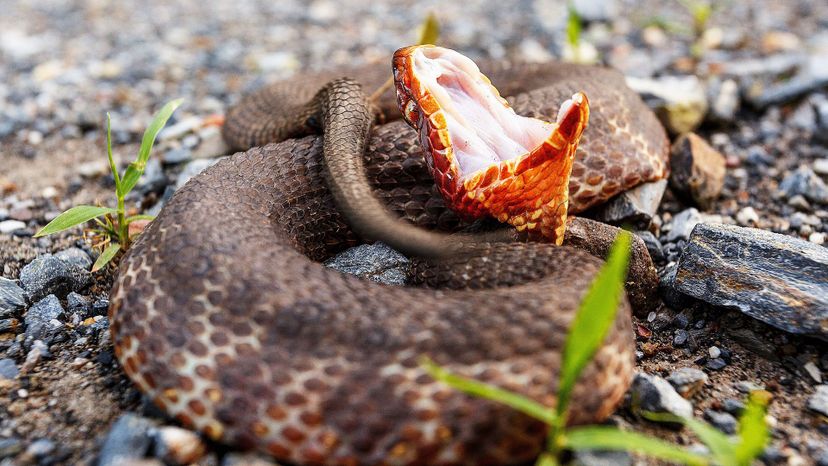
Cottonmouths are vipers, which mainly produce hemotoxins. They normally have to track down their targets after they've been bitten since their venom is slower at immobilizing prey.
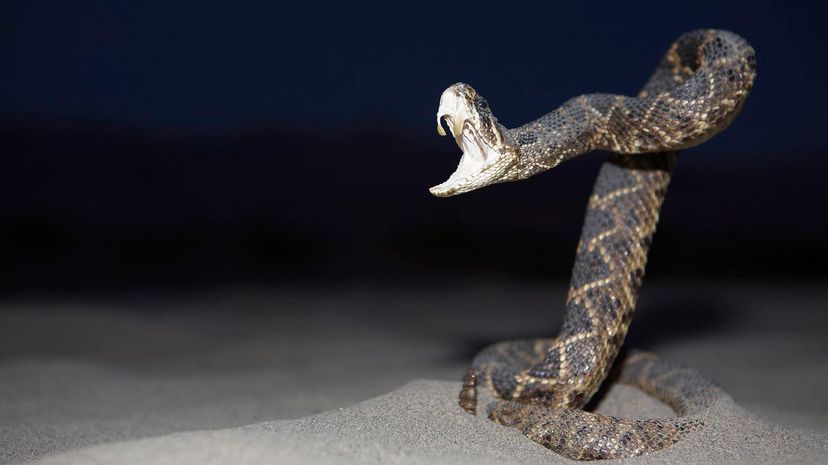
Immune to rattlesnake venom, the woodrat can certainly hold its own in a fight. Woodrats have been known to bite and scratch rattlesnakes to death on occasion! We wouldn't get on the wrong side of that fight!
Advertisement
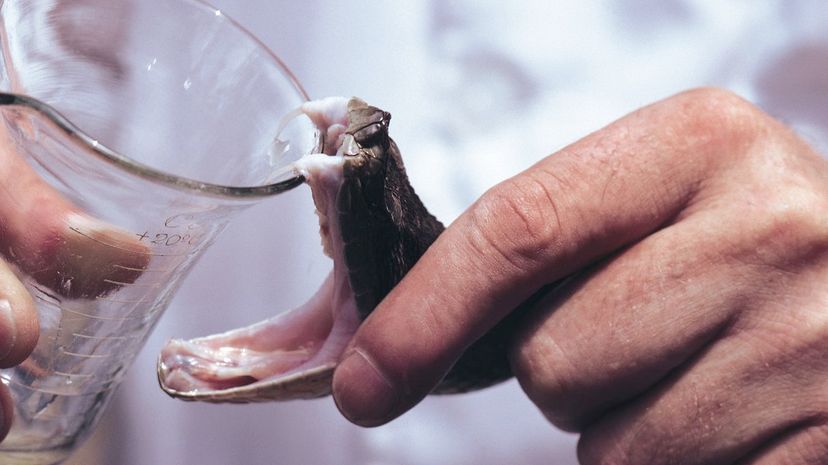
Cytotoxins destroy body cells. They can cause death to most if not all of the cells in your tissue or organ. If treated incorrectly, it could lead to the death of an entire limb.
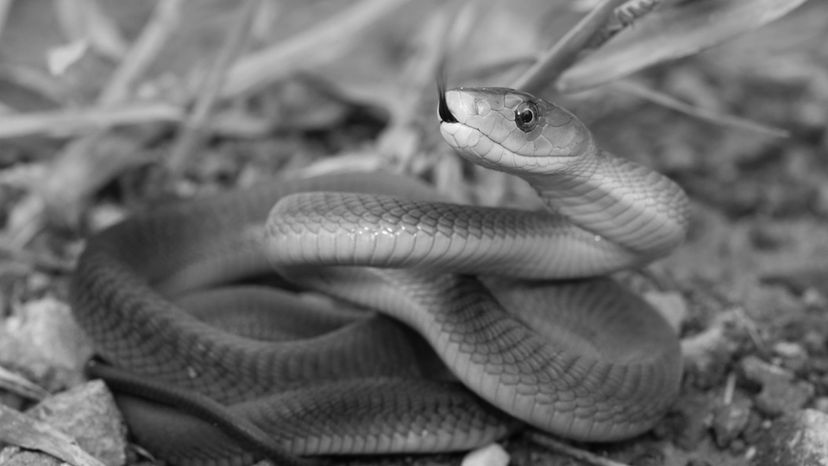
There are only four primary groups of venomous snakes that can be found in the United States: the rattlesnake, copperheads, coral snakes and cottonmouths. The black mamba, while distinctive and well known, is native to Africa.
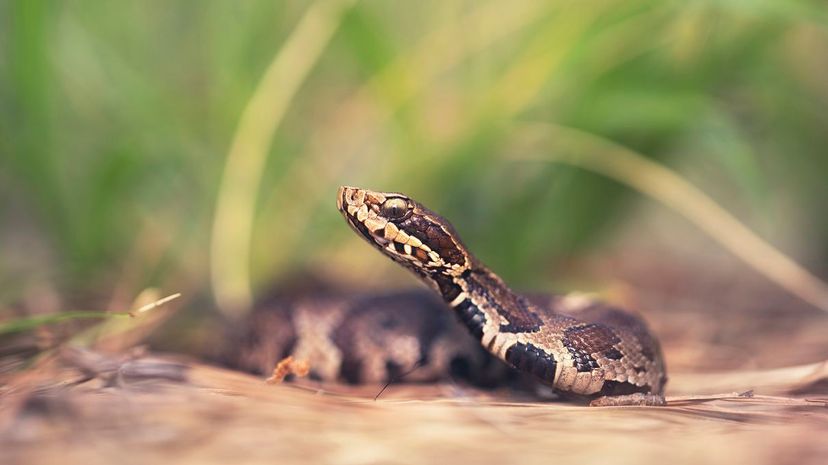
While some might believe that the cottonmouth snakes are named after their habitat, they actually get the moniker from their pinkish-white mouths! These distinctive creatures have distinct blocky heads and are usually between 2 and 4 feet in length.
Advertisement
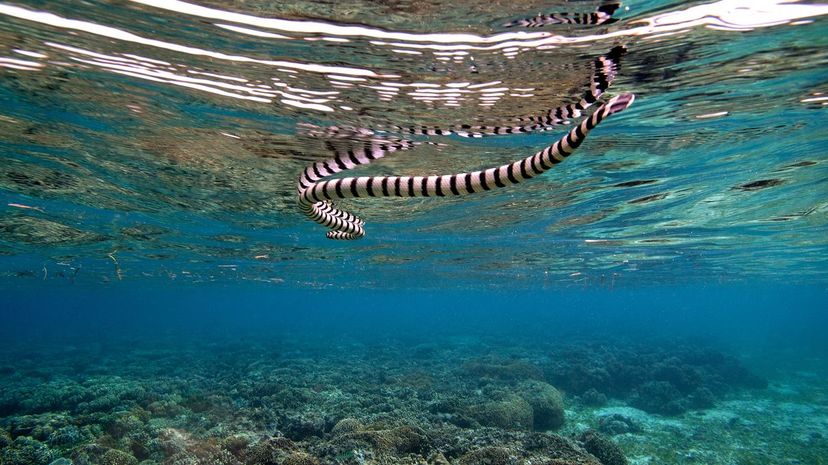
While many snakes might passingly be referred to as sea snakes, true sea snakes can stay underwater for upwards of eight hours. They accomplish this by breathing through their skin, with their enlarged lungs making up much of their body length.
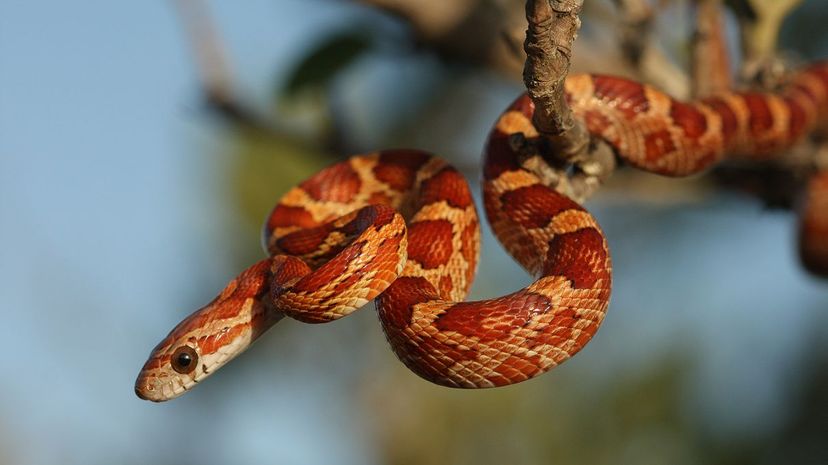
It's easy to confuse the reddish color of corn snakes as the color of copperheads. If the color isn't helping, just remember that copperheads have hourglass patterns on them.
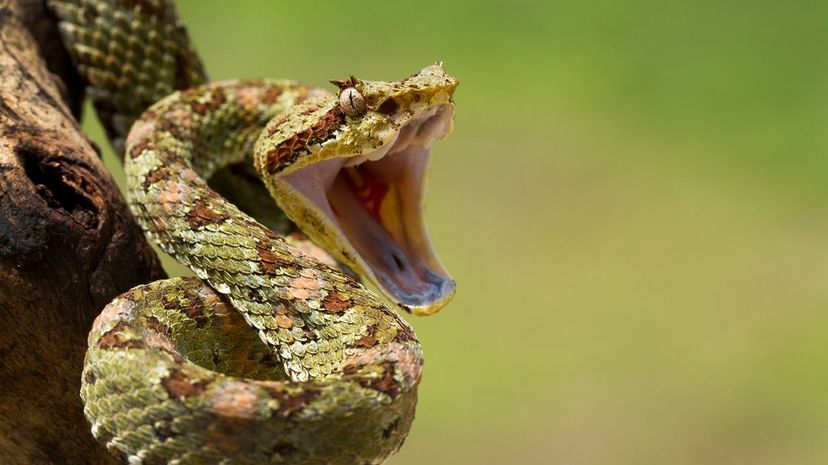
Anyone bitten by a venomous snake should remove any tight clothing, wash the wound, apply a light bandage to protect the wound from infections and seek medical attention at once.
Advertisement

Considering that venom is only harmful if it enters a person's bloodstream, it should be no surprise that in some cultures a well-cooked snake is actually quite the delicacy.

Although snakes can hear sound, they don't have the ability to hear music. When they're dancing, they're following the musical instrument, which they consider to be a threat.
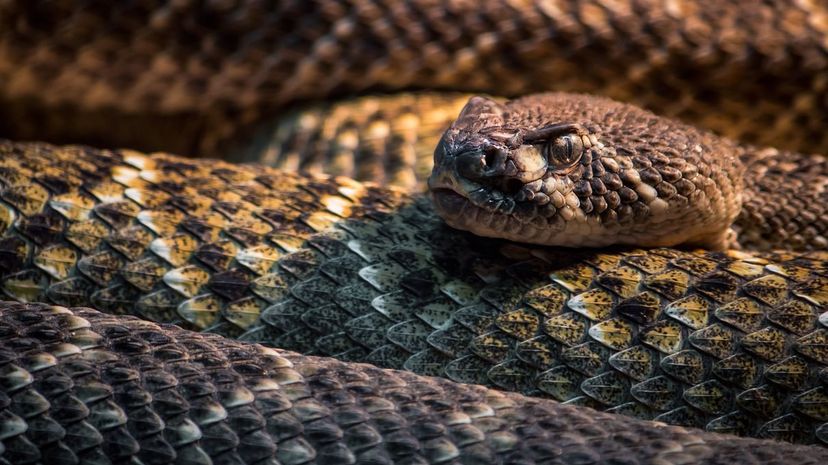
Vipers may seem more sluggish than other venomous snakes, but this is only due to the fact that they rely more on their camouflage ability to catch prey than their speed.
Advertisement

Despite being deadlier than the inland taipan, the faint-banded sea snake is actually less threatening to human beings. They only bite when severely mistreated so as long as you don't go poking it with a stick, you should be fine.